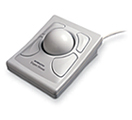The steps is simple and easy. I will try it in the future. The only problems are that we might not have air-tight plastic bottle and don't have much vegetable garbage, otherwise I can start to do a small one today. Basically we eat whole vegetable, then it is hard to get vegetable garbage. I think I can just use fruit garbage to do it.
Material:
- An airtight plastic bottle
- One part black, brown or yellow sugar (by weight)
- Ten parts water (by weight)
- Three parts fruit peelings or vegetable scraps (by weight)
Methods:
- Fill the bottle with the ingredients to a maximum of three-quarters of the bottle.
-> Close the lid tightly and leave to ferment for three months.
-> Open the lid once a day during the first month in order to release the gases formed and then as necessary during the second and third month.
-> After three months, the enzyme is ready to be harvested. Pour the liquid through a filter to remove all the residue.
Garbage enzyme: Fertilizer, pesticide, cleaning agent and more
Most people hear fermentation and run a mile, picturing a dirty, smelly process with a few worms and other creepy crawlies thrown in for good measure. However, that is miles from the truth when it comes to garbage enzymes. Garbage enzymes, or more palatably, eco-enzyme is made from fermented vegetable and fruit waste. The process is contained in a bottle, and you won't even have to get your hands dirty beyond chopping up the ingredients. When the right ingredients are used, the enzyme can even smell great.
Why make garbage enzymes?
Garbage- or eco-enzyme is an organic fertilizer, a natural pesticide and herbicide, a cleaning agent, an anti-bacterial agent, and even an air freshener. It's been known to turn sandy, infertile land into thriving farms, stop the growth of fungus on oil palms and increase the yield of fruit trees. Spritzing your dog with garbage enzyme will keep the ticks away and a dash of enzymes in your mopping water will help to disinfect your house and keep it smelling fresh. This all-natural product is an excellent alternative to harsh, environment-destroying chemicals. Best of all, it's a useful way to get rid of your kitchen waste and reduce your contribution to landfills, particularly if you don't have the space or the time to start a compost pile.
How to make garbage enzyme
To get started, you will need:
- An airtight bottle
- One part black sugar
- Ten parts water
- Three parts fruit peelings or vegetable scraps
Making garbage enzyme:
1. To make the enzyme, fill the bottle with the ingredients using the prescribed ratio. Make sure to only fill the bottle to a maximum of three-quarters of the way up as the gases formed during the fermentation process will cause the liquid to rise.
2. Close the lid tightly and leave to ferment for three months.
3. Open the lid once a day during the first month in order to release the gases formed. (Important! The gases formed may cause your bottle to shoot its cap if you forget)
4. Release gases as necessary (if the level of the liquid rises too high) during the second and third month. Don't worry if you see worms in the mixture simply add sugar, stir, and recap.
5. After three months, the enzyme is ready to be harvested. Pour the liquid through a filter to remove all the residue. The liquid is the enzyme while the residue may be used to start a new batch of garbage enzymes, and is also an excellent fertilizer when blended and dried.
Using Garbage Enzyme
Garbage enzymes need to be diluted with water before use. The degree of dilution depends on the intended use:
- For use as a fertilizer, dilute it using a ratio of between 1:100 (i.e. 1ml of enzyme to 100ml of water) and 1:1000
- For use as an insecticide, dilute it using a ratio of 1:100
- For use as a pesticide, use a ratio of 1:100
- For use as an air freshener, use a ratio of 1:200
- For use as plant hormones to boost productivity, use a ratio of 1:500
Tips and tricks
1. Use citrus fruit peel to make the enzyme smell nice
2. Use plant materials only!
3. Substitute black sugar with brown sugar or other types of unprocessed sugar. Even molasses will do. Anything but processed white sugar.
=====================
環保酵素(ECO Enzyme /Garbage Enzyme)
環保酵素技術是泰國樂素昆.普潘翁博士 (Dr Rosukon Poompanvong) 經過30多年努力所研發的一種果皮蔬菜廚餘酵素,通稱為“垃圾酵素”。
環保酵素的功用 (外用):多年的真實體驗記碌
1.人體皮膚:可治療各種多年不愈的皮膚病、刀傷、燒傷、發炎等症狀。(注:外用)
2.對果菜農夫的幫忙:垃圾酵素可減少蟲害,提高果菜的鮮美,加快收成,用了一次便立即看到效果。
實驗證明環保酵素可降底EMF指數: 冷氣機,電腦或電視機所釋放的電磁波, 測試器的指數是55至60多,但是如果在家裏室內靠近冷氣機,電腦或電視機的地方,放一大桶的環保酵素, 測試器的指數馬上下降到13左右. 無法在家裏種盆栽的人,可以試製環保酵素。環保酵素可活化快枯乾的樹木、花、草等,使土地肥沃起來。
3.環保酵素還能帶動室內空氣的流通。
4.淨化下水道:用過的環保酵素最後流到水道,能淨化河流和海洋。可避免導致氾濫,淹水問題。
5.防水管堵塞:可疏通馬桶或水槽。
6.除臭、淨化廢氣:有除臭功能,可消除香煙氣味、汽車廢氣、家居噴劑的毒氣等,同時增加空氣含氧量。家裏的蚊子、蒼蠅、老鼠、蟑螂的數量會減少.
7.減少垃圾:丟棄的廚餘釋放甲烷廢氣,比二氧化炭導致地球暖化的程度高21倍。
8.節省金錢:化廚餘為DIY環保清潔劑,節省家庭開銷。
9.減少害菌:能分解和消滅有害微生物及黴菌。
10.家居生活好幫手:可用作天然清潔劑,空氣消化劑、洗衣劑、汽車保養劑、衣物柔軟劑和有機肥料等。垃圾酵素可以清除果菜內的農藥, 只要把兩瓶蓋的酵素倒入洗菜的盆內, 再讓果菜泡浸越30分鐘就可.
11.淹水過後:如果能把大桶的環保酵素倒入污水中或者在淹水後清理環境時加入酵素,可以避免有害菌的滋長,鼠患及清除掉異味.
環保酵素基本做法
★材料
黑糖(黑糖或黃糖,不用白糖,因為黑糖有多壙物質,功能很強):1公斤
菜渣/果皮(蔬菜葉、菜頭菜尾、菜根、水果皮、馬鈴薯皮等):3公斤
水:10公升
黑糖:菜渣果皮:水 比例是 1:3:10 (不一定是要以公斤來計算)
★簡單容器:有密封開蓋口的塑膠器材料
★做法:
1.準備一個有密封蓋口的塑膠容器。
2. 把水和黑糖倒進瓷器、陶缸或者塑膠缸裏,順時方向攪均。
攪均後,加入廚房鮮垃圾。鮮垃圾包括:鮮樹葉、水果皮,準備丟掉的蔬菜或植物。
3.容器內留一些空間,以防止酵素發酵時溢出容器外。
4.將容器蓋緊。
5.製作過程中會產生氣體,如果使用過窄口的容器(如礦泉水瓶),切記每天將瓶口稍微打開,以泄放氣體,避免瓶子被撐破。如使用寬口的容器,氣體會自然擠出,較無上述問題。
6.不時把浮在液面上的垃圾按下去,使它浸泡在液體中。
7.環保酵素應該放在空氣流通和陰涼處,避免陽光直照,發酵3個月後即可使用。
注:第一個月須每日打開容器上的蓋口,釋放氣體,其氣體非常的強,故不健議用玻璃的容器,有些環保酵素經過一個禮拜後,便沒強氣,那就不用再開蓋了。
詳細環保酵素做法、圖片,可參考:http://www.enzymesos.com/?page_id=48
影像示範VIDEO:http://www.youtube.com/watch?v=9VWjTIgrfeU&feature=related
製作環保酵素須注意事項
1.避免選用玻璃或金屬等無法膨脹的容器。
2.用鮮垃圾包括剩飯、鮮菜葉、水果皮等準備丟掉的蔬菜或植物,不包括廢紙、塑膠、金屬罐頭和瓶子。
3.避免使用魚、肉、或油膩的廚餘,因為會造成腐臭味;如果要製作出來的酵素有清香氣味,可以加橘皮、檸檬皮和班蘭葉等氣味較好的蔬菜果皮。如果你放比較多菜類的話,它的味道就會有一點像鹹菜味道,如果你放多果皮,它的味道就會很香。做完後記得寫上製作日期。
4.成功的環保酵素呈棕黃色,而且有橘子般的刺激氣味,將製好的環保酵素過濾到瓶子中待用;如果酵素呈現黑色,即腐敗、失敗了,但只需加入同樣分量的黑糖,重新發酵3個月即可。
5. 環保酵素在第一個月發酵的時候,你會聞到會有酒精的味道;第二個月你就會開始聞到酸酸的味道,那個是醋酸,裏面很多的物質,礦物質維他命等等,再經分解後就產生了酵素。普潘翁博士說三個月過後,環保酵素就可以拿來使用了。它會非常的穩定,當然三個月過後,你可以直接保留放著,不一定要馬上把酵素倒出來,它可以存放一年、兩年、三年、十年、二十年都沒問題,發酵6個月或以上的酵素最好,發酵期越久,裏面的分子會越小,因為它會繼續的發酵、分解,當分子越小的時候滲透力就越強,效果越佳。環保酵素不會過期,越久越醇。切勿放置冰箱,低溫會降低酵素的活性。
6. 如果發現液體表面產生白色、黑色或棕色的漂浮物,不必理會,讓它繼續發酵。不同的環境,果菜會發酵出不同顏色的益菌,根據製作過程中如果發現蒼蠅卵,不必擔心,發酵過程會將它們分解掉,這也說明環保酵素不會對生物帶來危害。 有一些酵素,它上面會生一層白白的,像黴菌類,放心,那些都是細菌的屍體。
有一些人做好酵素之後放著隔了很長的一段時間後,它忽然間就會開始生一層好像果凍的東西,它是酵母酵素的“媽媽”,你可以把這一片拿出來,放在一個空罐上,然後加水放著,它本身就是酵素了。
7. 活用發酵後留下的垃圾渣:
-可以拿來晒乾,攪碎後埋在土裡充作肥料。
-攪碎後加入黑或黃糖,倒入馬桶凈化糞池,它可以分解掉那些铵,轉化成為對環境很好且對植物很有效的硝酸鹽(nitrate)。
-或可繼續留在容器內,加入新的鮮垃圾再次釀制酵素。
8.如果一時無法收集足夠份量的鮮垃圾,可陸續加入鮮垃圾,3個月的期限,從最後一次加入當天算起。
9.保住大氣層:如果每戶人家都將家中的垃圾,轉化為環保酵素並善於利用,不但能大大減少毒害環境和令地球增溫的廢氣,還能製造出能降低室溫效應及修補大氣層的臭氧,而能綠化地球,暖化人心。
有問題的環保酵素補救方法:
製作酵素從第一天開始到最後一天,酵素永遠不會變壞,會壞的是因為我們的環境,還有我們的製作過程有可能出了一些狀況。
問:如果做出來的酵素變成很臭,就好像一些臭雞蛋味道時那怎麼樣補救呢?
答:很簡單,趕快把一份的黑糖,糖的份量要按照原來的比例來加,然後給它攪勻,封口蓋緊,不要去打開它,一個月過後再開,它完全就會好了。
問:為什麼在我們做酵素的時候會生蟲呢? (很少有這樣的情況)
答:主要的一個原因是蓋子蓋不好,蓋不緊。只要你的蓋子蓋得緊的話,通常都不會生蟲。所以瓶子的蓋很重要,封密很重要,把酵素蓋好,照顧得很好的話,它不會生蟲。有蟲未必代表酵素不好。好的酵素,它的味道一定是有一點酸酸的,然後很香。
問:釋放氣體的時候,是否需要攪拌一下呢?
答:大桶的環保酵素可以用手下去攪拌一下,小的(像1公升瓶) 就不用去搖晃攪拌它。
環保酵素的使用方法 (可稀釋後使用)
1.園藝或農作:加水稀釋1000倍,可用作天然除蟲、除草劑和有機肥料,並可刺激植物賀爾蒙,改善蔬果品質和增加產量。連續將環保酵素澆在土地上3個月,可改善土質,讓土地重現生機。
2.家用清潔劑:可使用環保酵素摻入洗髮精、沐浴露、洗碗劑和洗衣水等,可減少化學成份。
(比率:1份環保酵素:1份洗條劑:10份清水。)
3.清洗蔬菜水果:加入30毫升或兩湯匙環保酵素在1公升清水裏,浸泡45分鐘。
4.清潔地板:加入30毫升或兩湯匙環保酵素在抹地水中,可清洗和消毒地板。
5.汽車保養:加入30毫升或兩湯匙環保酵素在汽車水箱裏,可降低引擎溫度。
6.當洗碗液:一份酵素、一份清潔劑加十份水,倒入溶器中,可多次使用
7.當抹地液:一至兩瓶蓋酵素,倒入半桶水
8.當洗衣液:四至五瓶蓋的酵素,使用的洗衣粉量減少
9.澆花、澆菜:一瓶蓋的酵素,加入1.5公升的水。
Read more!





 The little girl
The little girl